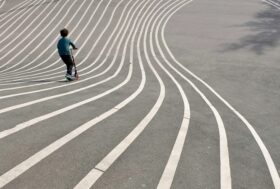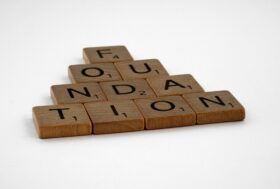A theoretical look at how to incorporate cognitive research into subject curriculum design

Amanda Spielman (Spielman, 2017) has said ‘at the very heart of education sits the vast accumulated wealth of human knowledge and what we choose to impart to the next generation: the curriculum.’
As a physics teacher, the new, more rigorous exam specification has come as a bit of a shock. Not because of its content — it is still physics, but because of the volume and un-connectedness of the content that has to be delivered. We need a curriculum that maximises the learning of subject content, and I hope that insights from the science of learning can help us to address this. While teachers may have been intuitively employing ideas relating to retrieval practice and cognitive load for many years, explicit action gains far greater results (Spada and Tomita, 2010). By setting up interlinking small-scale studies within our school, we can apply the results of larger university and researcher led studies and see what works in our context. At Harris Academy Purley, teachers are doing just that, carrying out small studies that make up a part of a larger whole.
The outline of a science of learning curriculum
The curriculum needs to be taught in a way that means that you keep revisiting topics, then building on them. For instance, you may teach the first parts of the topic of electricity, then energy, then the particle model of matter and then atomic structure, before teaching the second part of each of these topics. In this way you are able to revisit the key principles from the previous part of the topic. I think of this as the DNA model of the subject curriculum: a helical structure with the topics running along it. The first strand represents the subject content that must be understood, and the second strand represents the skills that are needed. This structure relates to ideas from the science of learning, in that revisiting topics creates opportunities for retrieval practice and interleavingAn approach to learning where, rather than focusing on one p... More.
Using concepts in practice
Firstly, we look at retrieval practice and how to add this in effectively.
According to Smith and Weinstein (Smith and Weinstein, 2017), retrieval practice is the process of withdrawing something learned from the long term memory to the working memory. They state that this has the effect of consolidating the learned information, making it easier to retrieve later. They also found that it has the indirect effect of making both teachers and students more focused, as they have clear feedback on what has not been retrieved.
With this in mind, a great curriculum should build in opportunities for students to undergo retrieval practice. However, this does not mean doing constant exams. I think a lesson starter is the perfect opportunity for this: 10 to 15 minutes of questions that link to previous content. From a physics perspective, it is important that these primarily deal with core concepts that underpin the subject, but some of my history colleagues are using this in order to help drive home key dates, places and names.
This gives you the opportunity to get feedback. A great model for feedback outlined by Harry Fletcher-Wood involves re-teaching, revisiting learning goals, revising the process and allowing more opportunities for practice (Fletcher-Wood, 2017). This could take the form of peer/self assessment after the retrieval practice starter, followed by re-teaching misconceptions and helping students to revisit and refine their goals by modelling how to improve work.
If we aim to embed retrieval practice into our lessons, the next logical question is how often, and at what intervals of time? Immediately after learning something, the memory of it begins to degrade and the rate of degradation will slow each time you revisit the learning. In order to fully embed a concept, it’s a good idea to revisit topics at time intervals that gradually become further and further apart.
All new learning involves transferThe processes of applying learning to new situations More based on previous learning (Bransford et al., 2000). The human memory can be improved by building links, which can be to real world experience or to past topics. Chunking is the practice of splitting or grouping information into manageable size pieces in order to reduce cognitive load. When working on the physics curriculum, each new topic has clear links to what they previously should know in order to help make these pathways. A set of models or real-world examples could also be used, though it is important to clearly show the how they relate to the content being taught (Richland et al., 2007).
Conclusion
While these ideas are backed up by evidence, it should be kept in mind that they will not necessarily work in all classroom contexts. We are, however, cautiously hopeful that applying some of these ideas will pay dividends. This is an exciting time in education, with the formation of bodies such as the Chartered College of Teaching helping us to link our practice to the latest research. It is my hope that as we build up more evidence in these areas, all subject curricula will be designed around the latest, evidence-based research on how students learn.
With thanks to The Harris Federation science consultants: Paul Sarson, Ian Walsh, Aaron Newel, Judith Roberts, Nathalie van der Weider, Aimee Calendar, Olivia Garner and Simon Birch.










